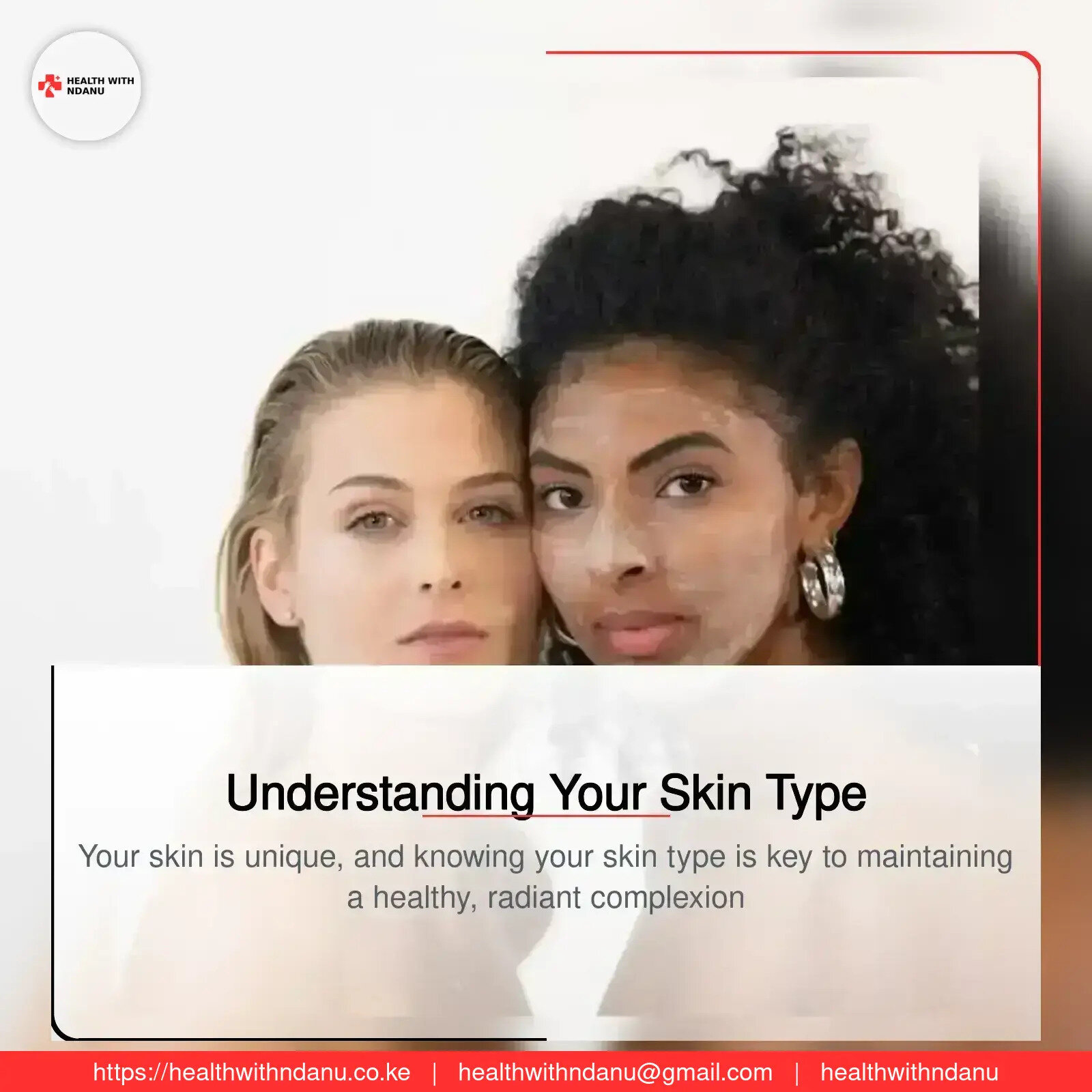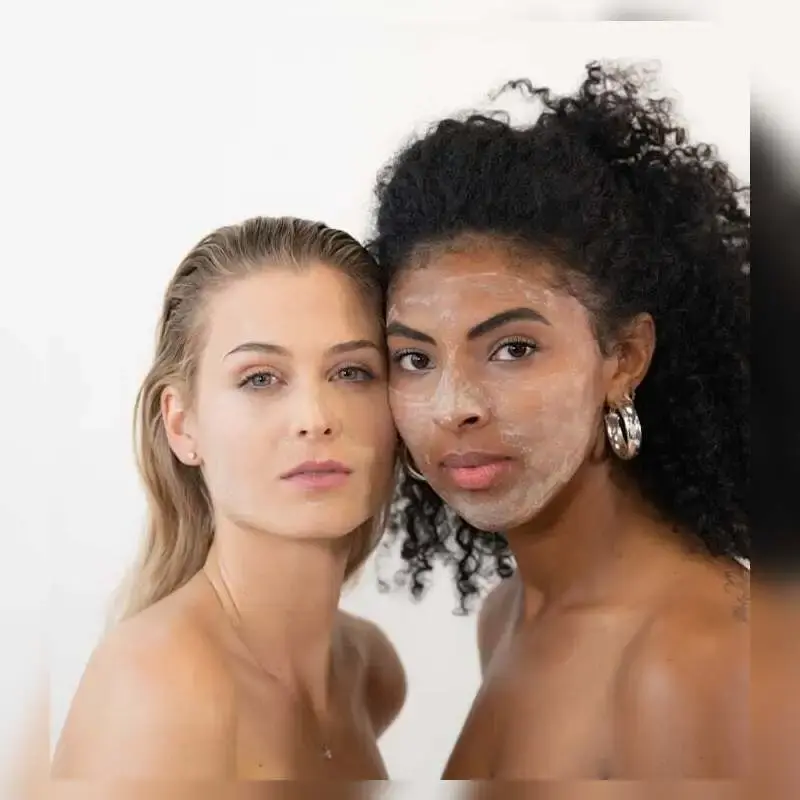


Introduction
Your skin is unique, and knowing your skin type is key to maintaining a healthy, radiant complexion. Whether you have oily, dry, sensitive, or combination skin, understanding your skin’s needs can help you choose the right skincare products and routines for optimal results. In this guide, we’ll break down the different skin types, how to identify yours, and how to care for it properly, ensuring that your skin stays balanced and beautiful at every stage of life.
What Is Skin Type?
Your skin type refers to the natural condition of your skin, determined by factors like oil production, moisture levels, and sensitivity. These characteristics are primarily influenced by genetics, but they can also be affected by environmental factors (like weather), lifestyle habits, diet, and even stress levels. Understanding your skin type is essential in tailoring a skincare routine that supports its natural balance and prevents issues like acne, dryness, or irritation.
1. Different Skin Types
a) Normal Skin
Normal skin is often described as “ideal” because it is well-balanced. It’s neither too oily nor too dry, with minimal imperfections. People with normal skin typically experience fewer breakouts or dry patches, and their skin tends to have a smooth texture and healthy glow.
Characteristics of Normal Skin: Smooth, even texture with no visible dryness or excessive oil. Pores are small and not enlarged.
Signs of Normal Skin: Soft, hydrated feel with minimal shine and no tightness.
Skincare for Normal Skin: Keep things simple with a gentle cleanser, lightweight moisturizer, and broad-spectrum sunscreen to maintain balance.
b) Oily Skin
Oily skin is characterized by excessive oil production, often leading to a shiny appearance, particularly in the T-zone (forehead, nose, chin). This type of skin is more prone to clogged pores, blackheads, and acne. The excess oil often occurs due to overactive sebaceous glands.
Characteristics of Oily Skin: Shiny skin, particularly on the forehead, nose, and chin. Pores may appear enlarged.
Signs of Oily Skin: A greasy appearance shortly after washing, acne, blackheads, and an overall shiny texture.
Skincare for Oily Skin: Opt for oil-free, non-comedogenic products to prevent clogged pores. Use gentle exfoliants and mattifying products to control excess oil.
c) Dry Skin
Dry skin lacks moisture, often resulting in tightness, flakiness, and rough patches. People with dry skin may experience redness, irritation, and fine lines more quickly than those with other skin types. The outer layer of skin doesn’t retain water as well, leading to a dry and dull appearance.
Characteristics of Dry Skin: Flaky patches, tightness, rough texture, and dullness.
Signs of Dry Skin: Dry patches that may flake off, visible fine lines, redness, or irritation.
Skincare for Dry Skin: Look for products that provide intense hydration, such as rich moisturizers, oils, and nourishing serums. Avoid harsh cleansers that strip the skin of its natural oils.
d) Combination Skin
Combination skin is a mix of oily and dry areas on the face, often resulting in an oily T-zone (forehead, nose, and chin) with dry or normal cheeks. This type of skin can be tricky to manage, as it requires targeted care to address the differing needs of each area.
Characteristics of Combination Skin: Oily in some areas (T-zone), dry or normal in others (cheeks).
Signs of Combination Skin: Oily spots and breakouts in the T-zone, dry patches on cheeks.
Skincare for Combination Skin: Use a balanced skincare regimen that caters to both areas. Apply oil-free products to the T-zone and richer creams to dry areas.
e) Sensitive Skin
Sensitive skin tends to react easily to skincare products, changes in the environment, and even certain foods. It may show signs of redness, irritation, burning, or itching after exposure to irritants or allergens.
Characteristics of Sensitive Skin: Redness, irritation, burning sensations, or itchy skin.
Signs of Sensitive Skin: Skin that reacts to certain products, environmental changes, or stressful situations. You may experience hives or rashes.
Skincare for Sensitive Skin:Use fragrance-free, hypoallergenic products that are gentle on the skin. Opt for calming ingredients like aloe vera, chamomile, and calendula.
2. How to Determine Your Skin Type
To effectively care for your skin, you need to first identify your skin type. Here are some methods you can use to assess your skin:
a) The Bare-Faced Test
Cleanse your skin with a mild, non-drying cleanser and let your face air-dry for about an hour. Pay attention to how your skin feels:
- Normal Skin: Feels comfortable, neither tight nor oily.
- Oily Skin: Feels greasy, particularly in the T-zone.
- Dry Skin: Feels tight or uncomfortable, especially after washing.
- Combination Skin: Feels oily in the T-zone, dry or normal on the cheeks.
- Sensitive Skin: Feels irritated, red, or stings.
b)The Tissue Test
After cleansing, press a tissue on various areas of your face (forehead, nose, cheeks, chin). If the tissue picks up oil, you likely have oily or combination skin. If it doesn't, you might have dry or normal skin.
Professional Evaluation
If you’re still unsure about your skin type, consulting a dermatologist or esthetician is a great option. They can give you a professional evaluation to ensure you’re using the best products for your skin.
3. How Skin Type Can Change Over Time
Your skin type isn’t static—it can change over time due to several factors:
- Age: As you age, your skin may produce less oil and become drier.
- Seasonal Changes: Weather can significantly impact your skin. Cold, dry winter air can make your skin drier, while summer heat can increase oil production.
- Hormonal Changes: Puberty, pregnancy, or menopause can cause fluctuations in skin type due to hormone changes.
- Diet & Lifestyle: Poor diet, stress, or lack of sleep can affect your skin’s oil production and hydration.
4. How to Care for Different Skin Types
Now that you know your skin type, it’s time to build a skincare routine. Here are some tips for each skin type:
Normal Skin
- Cleanse: Use a gentle cleanser to maintain the natural moisture balance.
- Moisturize: A lightweight moisturizer will keep your skin hydrated.
- Sun Protection: Always use SPF to protect against UV damage.
Oily Skin
- Cleanse: Use a foaming or gel-based cleanser to control excess oil.
- Exfoliate: Gentle exfoliation can help reduce the risk of clogged pores and breakouts.
- Oil-Free Moisturizers: Look for lightweight, oil-free formulas to hydrate without adding grease.
Dry Skin
- Cleanse: Use a hydrating, cream-based cleanser to avoid stripping natural oils.
- Moisturize: Rich, emollient creams or oils can help lock in moisture.
- Hydrating Serums: Incorporate serums with hyaluronic acid for extra moisture.
Combination Skin
- Cleanse: Use a mild cleanser that doesn’t strip or add excess oil.
- Targeted Moisturizing: Apply lightweight products on the T-zone and richer creams on the cheeks.
- Exfoliate Gently: Regular exfoliation can help balance the skin's oil production and smooth dry areas.
Sensitive Skin
- Cleanse: Use fragrance-free, gentle cleansers without harsh chemicals.
- Moisturize: Stick to soothing, hypoallergenic moisturizers.
- Avoid Irritants: Stay away from products with alcohol, artificial fragrances, or known allergens.
5. Common Myths About Skin Types
Myth 1: Oily Skin Doesn’t Need Moisturizer
Truth: Even oily skin needs moisture. The key is to use oil-free, non-comedogenic moisturizers to prevent overproduction of oil.
Myth 2: Sensitive Skin Can Only Use Expensive Products
Truth: Sensitivity is often due to irritants, not price. There are many affordable, gentle products suitable for sensitive skin.
Conclusion
Understanding your skin type is essential for developing an effective skincare routine. Whether you have normal, oily, dry, combination, or sensitive skin, choosing the right products and adapting your routine to your skin’s needs will help maintain healthy, glowing skin for years to come. Remember, skin type can change over time, so it’s important to reassess periodically and adjust your skincare accordingly.
Call to Action
Take a moment to assess your skin type and experiment with products designed for your needs. Share your skincare journey in the comments below—what works for your skin?
Got Your Own Experience? Share with us
Kategoria Maarufu
Blogu Zinazotembelewa Zaidi
Daily Newsletter
Get all the top stories from Blogs to keep track.



